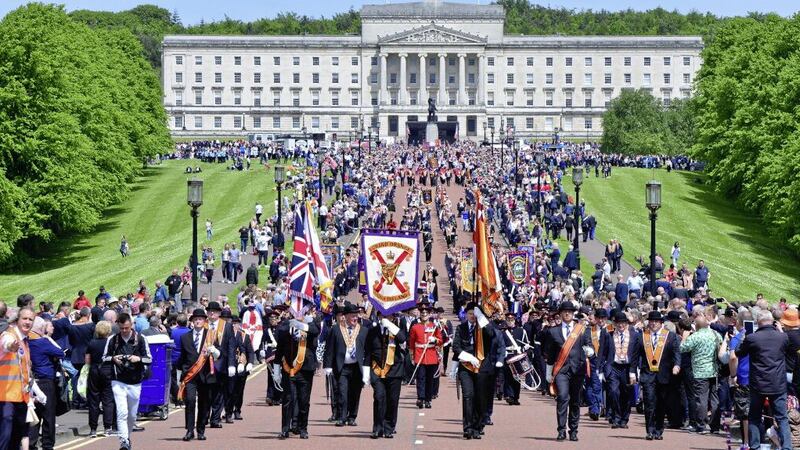YOU need neither be a keen observer of the lunar cycle nor able to precisely calculate each year's spring equinox to know that Easter is a moveable feast.
So although Good Friday was last week, the anniversary of the Good Friday Agreement, signed on April 10 1998, doesn't fall until tomorrow; that inherent flexibility around when its birthday should be celebrated could almost be a metaphor for the constructive ambiguity at the heart of the agreement.
In the intervening 23 years this constructive ambiguity has, depending on your point of view, been the genius or the failure of the agreement. Or perhaps both.
It created a framework that allowed different political parties to sign up to what they could sincerely say was the same deal, while allowing them to maintain different interpretations of that same agreement. What could possibly go wrong...?
To dredge but one example from the memory banks, the agreement was less than clear around the specifics of decommissioning, leading to years of IRA foot-dragging and political instability at Stormont.
This baked-in ambiguity contributed to a sequence of events which saw the Ulster Unionist Party and the SDLP - the parties who did the most heavy lifting - overtaken at the polls by, respectively, the DUP and Sinn Féin.
Their reward was the St Andrews Agreement of 2006. Essentially the Good Friday Agreement for slow learners - chiefly the DUP and Ian Paisley - it rebooted powersharing at Stormont.
But it also lost something of the spirit of the 1998 deal.
For example, St Andrews deconstructed unambiguously the cross-community vote to elect the first and deputy first ministers.
In came a formulation that saw the first minister nominated by "the largest political party of the largest political designation" and the deputy first minister by "the largest political party of the second largest political designation".
This was a fundamental and retrograde shift. The extent to which it diluted the essence of the Good Friday Agreement was perhaps not immediately apparent because St Andrews also heralded the 'Chuckle Brothers' era at Stormont.

Ian Paisley and Martin McGuinness sharing power at the top of the executive was a remarkable development by any standards and seemed to epitomise the cross-community, friends-across-the-divide possibilities so often projected upon the agreement.
But so significantly did St Andrews alter the architecture that builds the executive, and so poisoned has our politics since become, that it is difficult to imagine today's first and deputy first ministers having a chuckle together, much less agreeing about an awful lot that might matter (any chance of a decision on a new head of the civil service, for example?).
A Damascene change does not seem likely any time soon.
There's the matter of preparing for an assembly election next May; that might be a little over a year away, but in the weird world of this place, where the Battle of the Boyne and the Easter Rising happened just the other day, next May also counts as 'really soon'.
The prospects of peace breaking out at Stormont have been greatly diminished by the continuing fall-out over the Bobby Storey funeral and the collective Brexit-fantasy grievance-fever gripping unionism.
The funeral episode is, among whatever else it is, an example of Sinn Féin exceptionalism. Unionism has a long history of this too, so exceptionalism isn't actually that exceptional. Entitlement also describes it.
Unionism's plight seems all the more tragic because this is Northern Ireland's centenary year. That they can't have a commemoration stone at Stormont because Sinn Féin, in an act of petty-mindedness astounding even by this place's standards, won't allow it rather sums up the depths of division.
It's not impossible to imagine the creation of a covert network of 'NI 100 stones', like Mass rocks in Penal times, appearing to allow unionists to celebrate the centenary in sullen secrecy.
How have we fallen so far? Anyway, happy birthday, Good Friday Agreement.










